Apple iPad Air (2025) Review
Pros
- Apple Intelligence runs well
- Solid cameras for a tablet
- Fast connectivity options
- Good screen
- Solid cameras for a tablet
Cons
- Hardly anything is new
- Accessories add to the price
$375 at Amazon see it
Apple iPad Air (2025) Specs
| Name | Value |
|---|---|
| Operating System | IPadOS 18 |
| Dimensions | 9.74 by 7.02 by 0.24 inches |
| Weight | 1.01 lbs |
| Screen Size | 11 inches |
| Screen Resolution | 2,360 by 1,640 pixels |
| CPU | Apple M3 |
| Storage Capacity | 128 GB |
| Battery Life | Up to 10 hours |
If the 2025 iPad Air feels familiar, that’s because it closely mirrors the 2024 version in both design and core features. Priced from $599 for the 11-inch model, the newest iteration introduces only one major change: the inclusion of Apple’s M3 chip. This upgrade brings noticeable improvements in speed, battery efficiency, multimedia performance, and camera quality over its predecessor.
We appreciate the flexibility of having two display sizes, up to 1TB of storage, and support for Apple Intelligence features. However, beyond these upgrades, the overall experience and target audience remain unchanged. Positioned between the $349 base iPad and the $999 iPad Pro, the iPad Air continues to offer an excellent middle ground—delivering strong performance without the premium price tag.
Whether you’re a student or a digital creator looking for a capable yet affordable device, the iPad Air remains the best value in Apple’s tablet lineup, earning our Editors’ Choice once again.
Design: Not Much Room to Improve
The 2025 iPad Air looks identical to its 2024 predecessor, with no changes to its exterior design. All improvements are internal, so you’re still getting the same premium build and sleek form factor. Apple continues to offer the iPad Air in two display sizes: 11 inches, starting at $599, and 13 inches, starting at $799. For this review, I tested the 13-inch version.
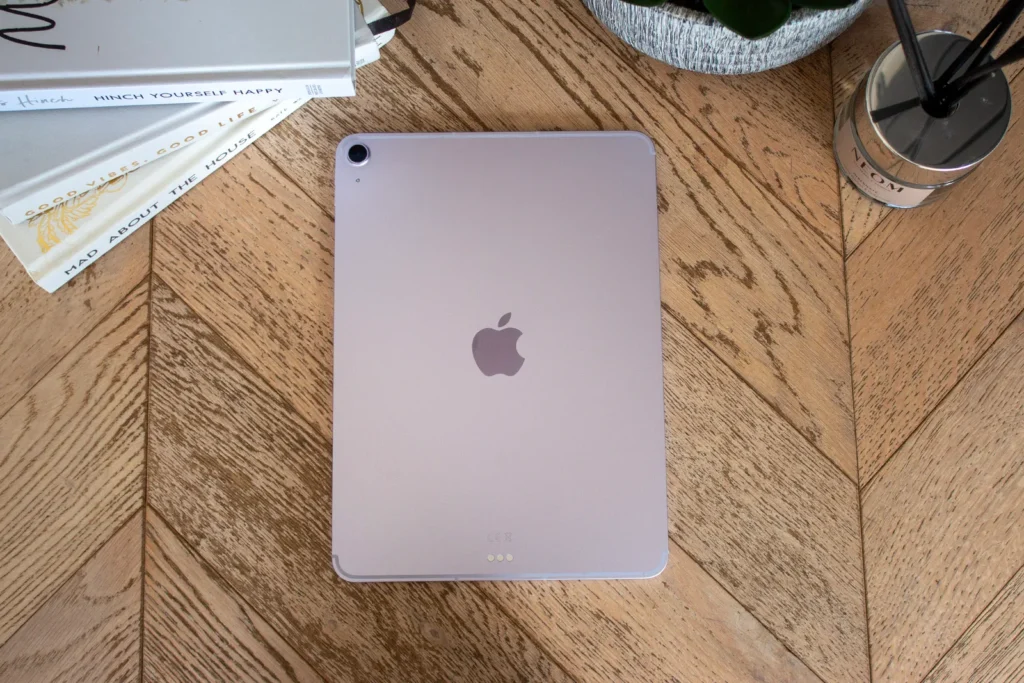
Both the 11-inch and 13-inch iPad Air models retain the same size and weight as their previous versions. The 11-inch Air comes in at 9.74 x 7.02 x 0.24 inches and weighs 1.02 pounds, closely matching the dimensions of the 11-inch iPad Pro (9.83 x 6.99 x 0.21 inches, 0.98 pounds) and the standard iPad (9.79 x 7.07 x 0.28 inches, 1.05 pounds).
The larger 13-inch iPad Air measures 11.04 x 8.46 x 0.24 inches and tips the scale at 1.36 pounds, which puts it slightly above the 13-inch iPad Pro’s 11.09 x 8.48 x 0.20 inches and 1.28 pounds. As with previous generations, the 13-inch Air remains the heaviest model in Apple’s current iPad lineup.
Similar Products
Our Current Picks for what is the best iPad to buy in 2025?
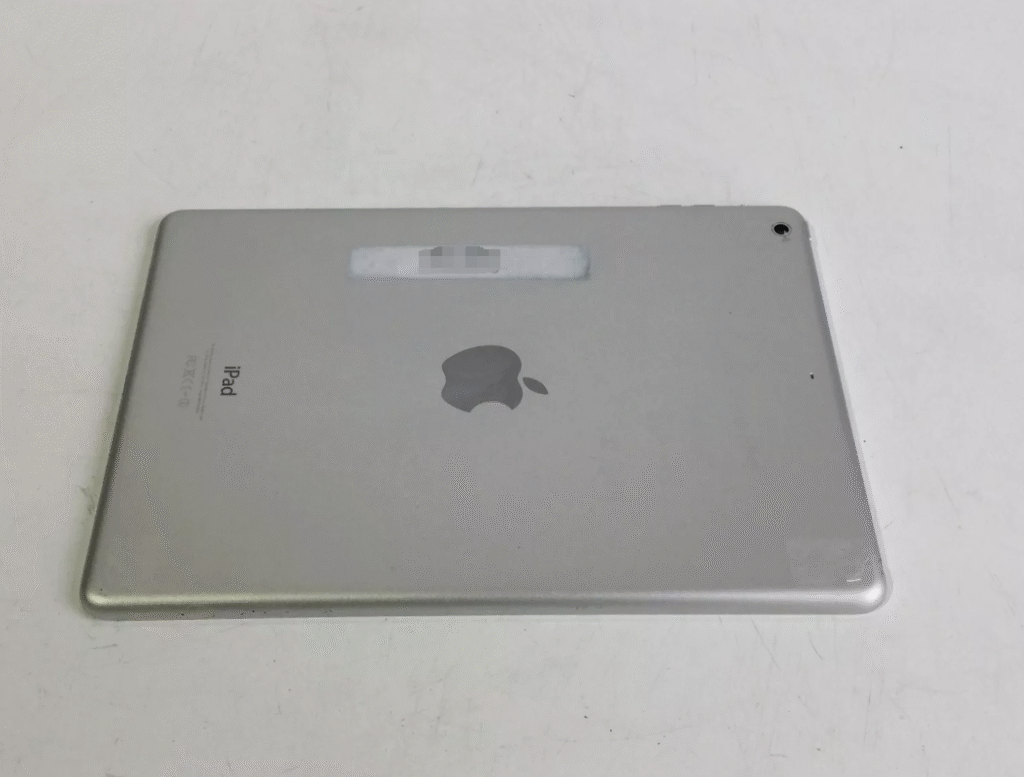
The 11-inch version is more compact, making it ideal for travel and easier to slip into smaller bags. However, it offers less screen space for multitasking or media consumption. On the other hand, the 13-inch model provides a more expansive display that’s great for productivity, but you’ll need a bag big enough to carry something the size of a typical laptop.
The iPad Air features a sleek aluminum chassis around the sides and back, while the front is dominated by a single sheet of glass. Although Apple doesn’t disclose the exact type of glass protecting the display, the device lacks an official IP rating, meaning it’s not certified for dust or water resistance. In contrast, the Samsung Galaxy Tab S9 FE comes with an IP68 rating, allowing it to withstand water immersion. If you plan to use your iPad Air near pools, beaches, or in other potentially wet environments, investing in a high-quality waterproof case is strongly recommended.
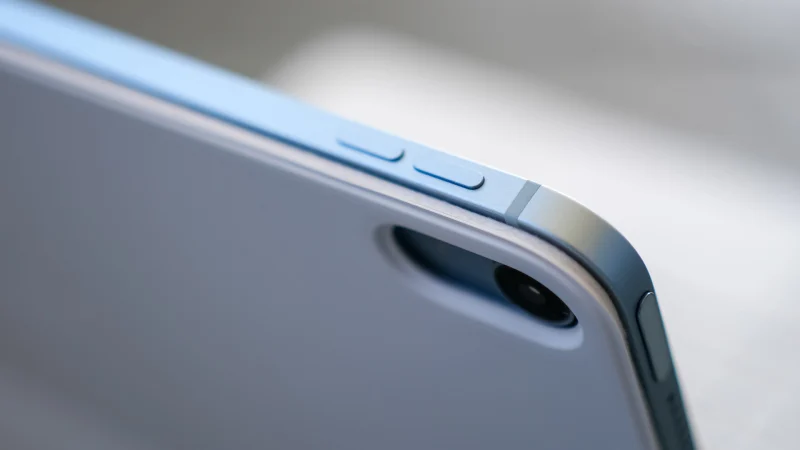
Apple maintains its familiar button layout on the iPad Air, with the power button positioned on the left side near the top corner and the volume controls placed on the upper edge, also toward the left. These physical buttons offer satisfying feedback and are easy to press. Since the iPad Air lacks Face ID, biometric security relies on the fingerprint sensor built into the power button.To make unlocking the device more convenient, I enrolled both thumbs and index fingers to ensure quick access no matter how I held the tablet.
A centrally located USB-C port sits along the bottom edge, while Apple’s Smart Connector—three small contact pins—can be found on the back near the USB-C port for connecting accessories like keyboards. If you purchase the Apple Pencil, it magnetically attaches and charges along the top edge. The tablet also features two speakers, located on the shorter sides, delivering stereo sound when the device is used in landscape mode.
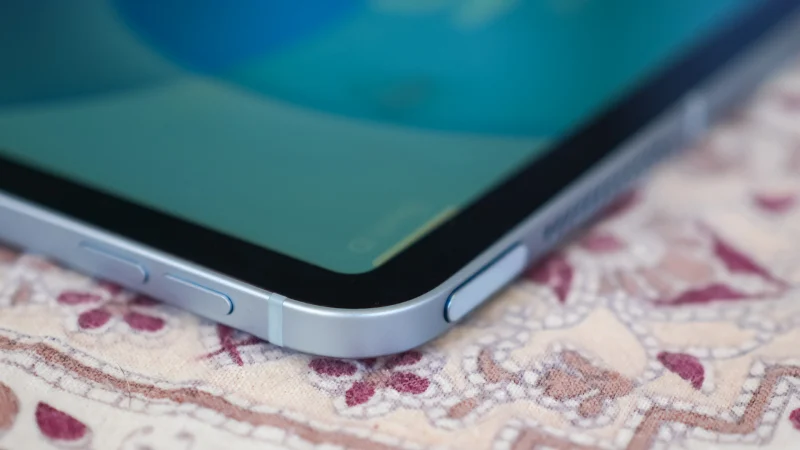
The iPad Air places its rear camera neatly in the upper-left corner of the back panel. For video calls, the front-facing camera is now centered along the top edge when the tablet is held horizontally—perfect for conferencing and virtual meetings. If you choose the cellular version, keep in mind that there’s no physical SIM slot; Apple has fully transitioned this model to eSIM technology.
As for finishes, Apple hasn’t introduced any new colors for the 2025 lineup. The iPad Air is still available in Blue, Purple, Space Gray, and Starlight. For this review, I tested the Blue variant, which you can see in the accompanying photos.
Display: No Change, But It Still Looks Good
Apple states that the display on the 2025 iPad Air is identical to the one used in the 2024 version. It features an LED-backlit IPS LCD panel, rather than the OLED display found on the iPad Pro, which offers deeper contrast. One design detail I appreciate is the evenly sized bezels surrounding the screen—they give the tablet a clean, balanced look.
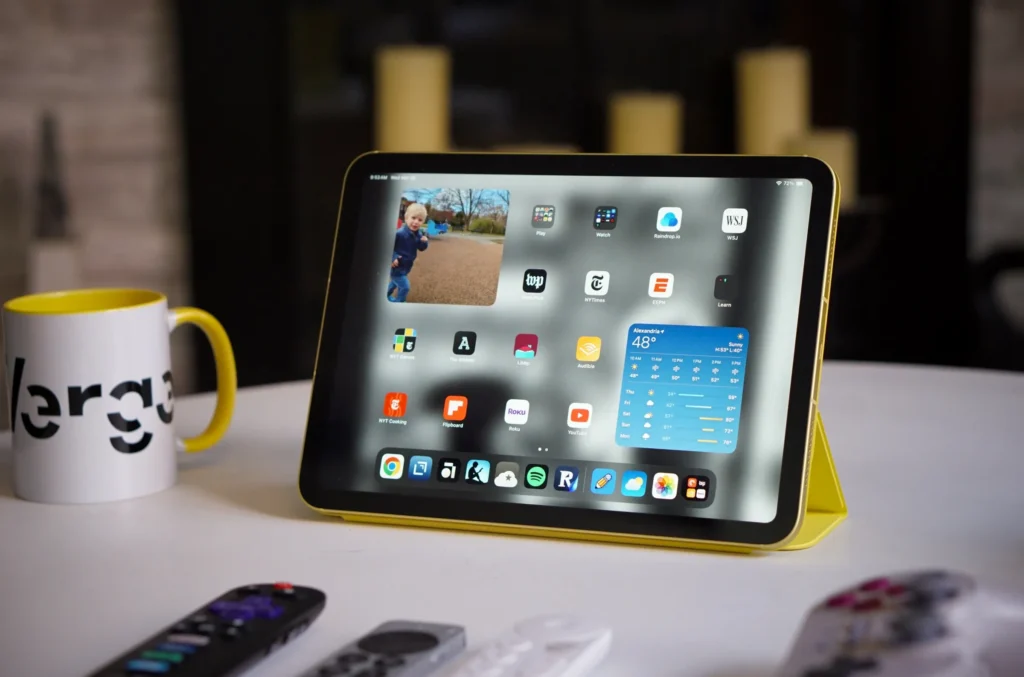
The 11-inch iPad Air features a resolution of 2,360 x 1,640 pixels, offering a pixel density of 264ppi. The larger 13-inch version increases the resolution to 2,732 x 2,048 pixels but maintains the same pixel density. Both displays are fully laminated and come equipped with anti-reflective and fingerprint-resistant coatings. Apple also includes its True Tone technology, which automatically adjusts the screen’s white balance based on the surrounding lighting conditions for a more natural viewing experience.
One downside is that both models still use a fixed 60Hz refresh rate—the same as last year’s version. In contrast, the iPad Pro lineup boasts adaptive 120Hz displays, which provide smoother visuals and are especially useful for tasks like gaming or video editing. Another key difference is brightness. The 11-inch iPad Air reaches up to 500 nits, while the 13-inch version can hit 600 nits. However, this falls short of the iPad Pro’s significantly brighter panels, which can reach up to 1,600 nits, making them much easier to use in direct sunlight.
That said, for general use, the iPad Air’s display is bright, crisp, and more than capable for everyday environments. While it doesn’t reject glare as effectively as the Pro models, it still delivers a far superior viewing experience compared to the entry-level iPad, which struggles more with reflections. Personally, I found the extra screen space on the 13-inch model to be especially useful for multitasking and creative work.
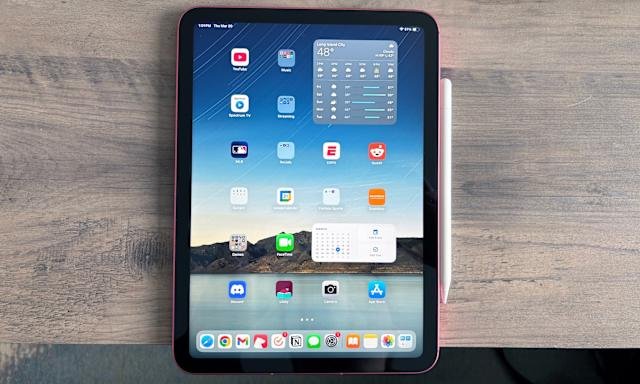
In comparison, Samsung’s Galaxy Tab S9 FE features a 10.9-inch LCD display with a resolution of 2,304 x 1,440 pixels and a 90Hz refresh rate. On the higher end, the Galaxy Tab S10+ steps things up with a 12.4-inch AMOLED screen, offering a sharper resolution of 2,800 x 1,752 pixels and a smoother 120Hz refresh rate.
Performance: The Biggest Differentiator
this makes the iPad Air the first tablet in Apple’s lineup to feature the M3, as the latest iPad Pro models skipped directly to the M4. Despite that leap, the M3 still brings a noticeable performance improvement over last year’s Air. While Apple hasn’t disclosed the clock speeds compared to the M2, one major advantage is the addition of hardware-accelerated ray tracing, making the M3 model more capable for gaming and demanding graphics tasks.
Storage and memory options remain unchanged from the previous generation.While this consistency is welcome, the 13-inch version arguably deserves a higher starting storage tier—256GB would better suit creative users working with large files. Pricing starts at $599 for the 11-inch model with 128GB and goes up to $1,299 for the 13-inch version with 1TB.
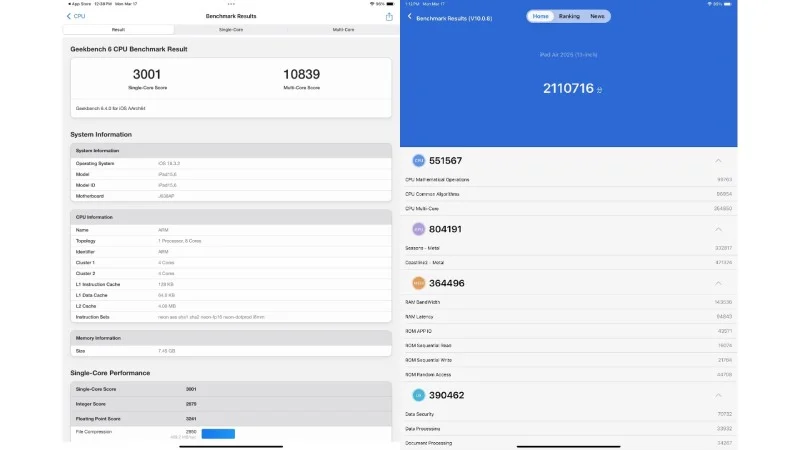
To measure the performance difference between the M3 and M2 chips, I ran several benchmark tests. The 2025 iPad Air with the M3 processor achieved 3,001 for single-core and 10,839 for multi-core scores on Geekbench 6. In 3DMark’s Wildlife Extreme test, it rendered 6,535 frames at an average of 39.1fps. On GFXBench’s Aztec Ruins test, it delivered 3,768 frames at 58.6fps, and it earned a total score of 2,110,706 on the AnTuTu benchmark.
In comparison, the 2024 iPad Air with the M2 chip showed slightly lower numbers overall: 2,581 and 9,887 on Geekbench 6, 36.7fps in 3DMark, 60fps in GFXBench, and an AnTuTu score of 1,997,738. Interestingly, the M2 actually outperformed the M3 in GFXBench’s frame rate, though the difference was minor.
For context, the M4-powered iPad Pro surpasses both, with 3,679 and 14,647 in Geekbench 6, 51.5fps in 3DMark, 60fps in GFXBench, and a massive 2,746,950 score in AnTuTu.
On paper, the M3 doesn’t dramatically outpace the M2, and it’s a step behind the M4 in raw performance. However, in everyday use, the difference is barely noticeable. Tasks like launching apps, switching between them, editing in Lightroom, or loading projects in GarageBand felt equally fluid on both the M3 iPad Air and the M4 iPad Pro.
The main performance gap shows up when using Apple Intelligence features. For example, Image Playground runs faster on the M4 Pro, followed by the M3 Air, then the M2 Air. Still, considering there’s a $400 difference between the Air and Pro models, the M3 iPad Air offers excellent value for users who don’t need Pro-level power for demanding creative workflows like ProLogic.
Battery: Slight Improvements
Since the very first iPad launched back in 2010, Apple has held firm to the 10-hour battery life standard across its tablet lineup. Despite the improved power efficiency of today’s advanced chips, we’ve yet to see that extra performance translate into longer usage times. It would be great to see Apple push that endurance to 12 hours or more, but for now, that remains more of a hope than a reality.
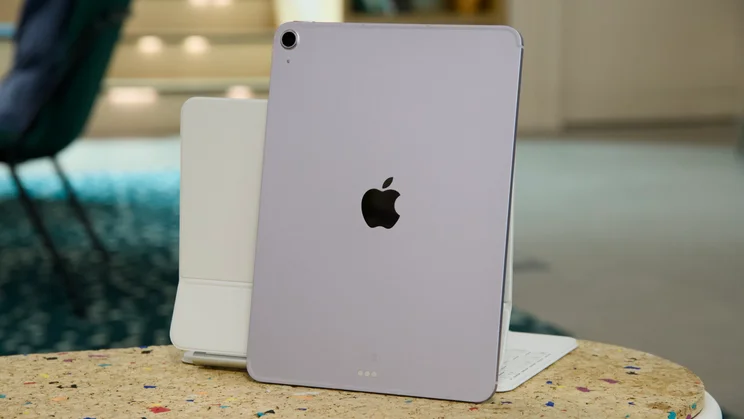
Apple advertises the iPad Air’s battery life at 10 hours for web browsing over Wi-Fi or video playback, with that figure dropping to around 9 hours when using a cellular connection like 4G or 5G. In my day-to-day usage, these claims held up well. Despite extended use over several days, I never fully drained the battery during typical tasks.
However, our controlled battery test tells a slightly different story. We assess battery life by continuously streaming video over Wi-Fi with the brightness maxed out. In this scenario, the 13-inch iPad Air managed to last 7 hours and 21 minutes—a solid improvement over the 2024 model’s 6 hours and 47 minutes. In comparison, the Samsung Galaxy Tab S9 FE+ came in just ahead at 7 hours and 23 minutes.
The iPad Air comes bundled with a sturdy braided USB-C cable and Apple’s 20W charging adapter. Using these, the device charged from 0% to full in 1 hour and 49 minutes—shaving off a few minutes compared to last year’s version. That said, the iPad Air does not offer wireless or reverse charging capabilities, features found in some competing tablets.
Connectivity: Quick and Reliable
Apple states that the M3 iPad Air features the same wireless connectivity setup as the M2 iPad Air and M4 iPad Pro. This includes sub-6GHz 5G, Wi-Fi 6E, Bluetooth 5.3, GPS/GNSS, and compatibility with Wi-Fi calling. However, it does not support faster mmWave 5G or ultra-wideband technology. Additionally, the tablet does not incorporate Apple’s proprietary C1 modem introduced with the iPhone 16e.
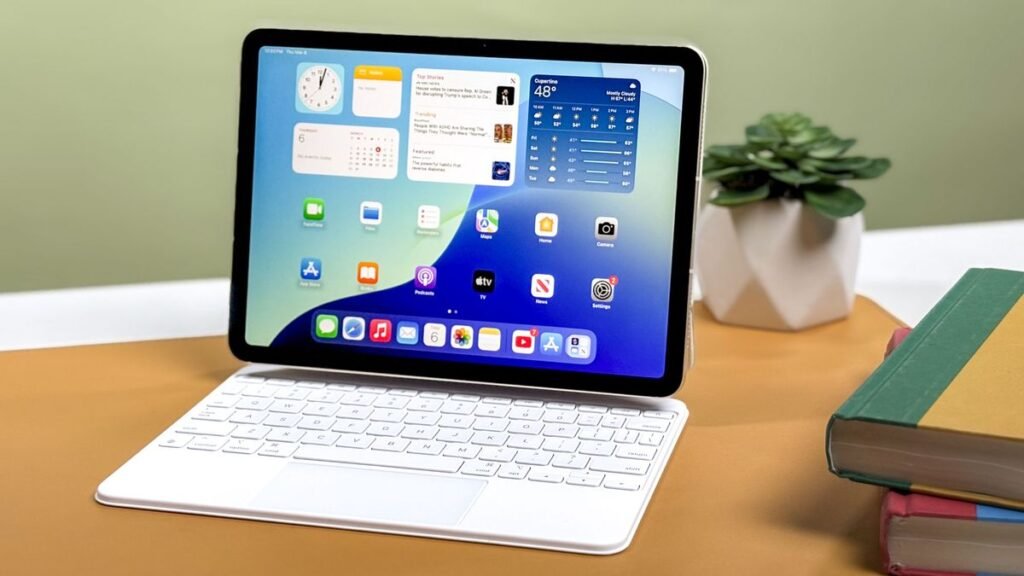
I tested the iPad Air using Tello Mobile, a mobile virtual network operator that runs on T-Mobile’s infrastructure. During the trial, the device performed impressively, achieving download speeds up to 425Mbps and upload speeds reaching 128Mbps.
When connected to Wi-Fi, the iPad Air delivered exceptional performance, hitting 810Mbps download and 248Mbps upload speeds near a Wi-Fi 6 router with a 1Gbps internet connection. For comparison, an iPad Pro tested in the same environment recorded slightly lower speeds of 790Mbps down and 224Mbps up.
Bluetooth connectivity on the iPad Air is smooth and reliable, easily pairing with wireless headphones and earbuds. Apple’s AirPods, in particular, offer a seamless experience due to their tight integration with Apple devices and effortless device switching between iPhone, iPad, and MacBook.
For wired connectivity, the iPad Air retains the USB 3 specification found in last year’s M2 model. This allows support for DisplayPort output and can drive a 6K display at 60Hz, with data transfer speeds up to 10Gbps. In contrast, the M4 iPad Pro boasts a faster USB 4 Thunderbolt port, capable of 40Gbps data throughput.
Audio: Simple Stereo Speakers With Better Decoding
Apple does not advertise Dolby Atmos or other high-end audio formats for the iPad Air. Its dual speakers, positioned on either short side of the device, deliver sound loud enough to comfortably fill a medium-sized room at around 85 decibels. When tested with The Knife’s track “Silent Shout,” the tablet impressed by producing rich and impactful bass tones. These speakers also perform admirably during video playback, offering deeper low frequencies than typically expected from a tablet’s audio system.
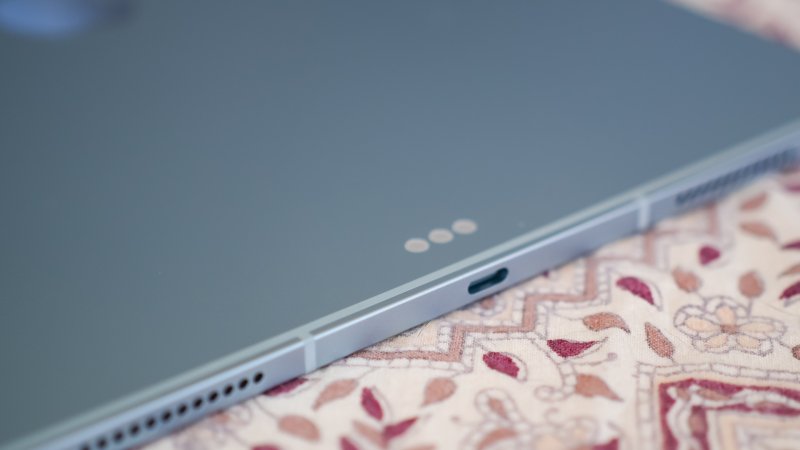
The 2025 iPad Air equipped with the M3 chip offers a modest edge in media capabilities compared to the M2 model. It supports hardware-accelerated playback of 8K HEVC videos as well as ProRes and ProRes RAW formats, features the M2 lacks. Additionally, the M3 can both encode and decode ProRes files and also decode AV1—a widely used open-source codec for streaming online video. This means users will experience smoother compatibility and fewer issues when playing various audio and video files found on the internet.
Camera: The M3 Ups the Quality
On the hardware front, the M3 iPad Air retains the same camera setup as its M2 predecessor. It features a single 12MP rear camera capable of recording 4K video, alongside a 12MP Center Stage front-facing camera designed for selfies and video calls. This configuration mirrors the camera system found in the M4 iPad Pro.
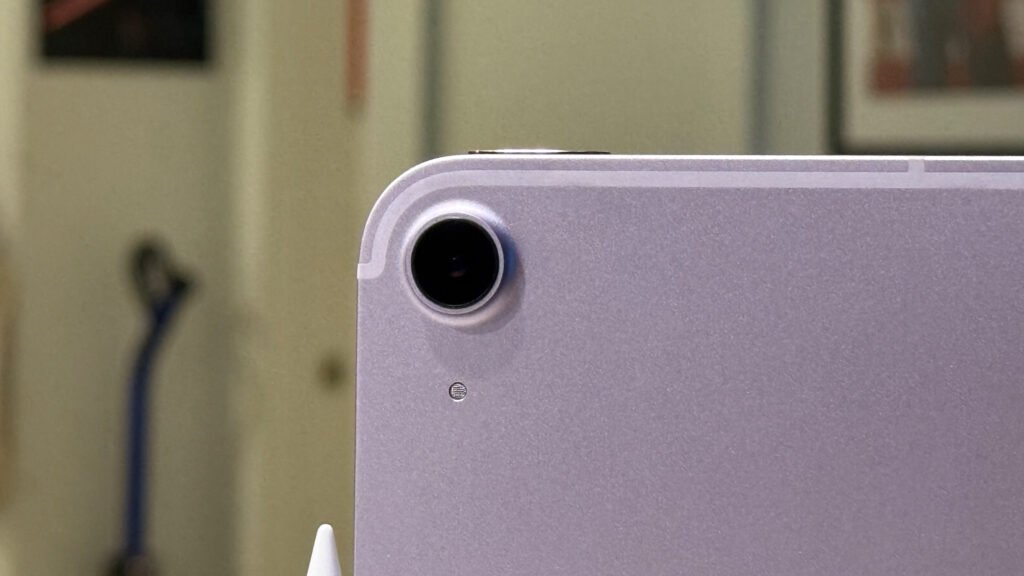
It includes autofocus, HDR 4, wide color capture, Live Photos, and panorama mode. Among tablets, it’s still one of the top performers. In well-lit outdoor settings, it captures crisp, well-exposed images with minimal noise. In low-light conditions, photo quality does dip—grain becomes more noticeable and detail softens—but the results remain respectable.
When it comes to video, the iPad Air performs surprisingly well. The rear camera records in 1080p or 4K at up to 60 frames per second and includes features like slow motion and time-lapse. While it lacks the professional-grade features of the iPad Pro—such as ProRes recording, stereo sound, and audio zoom—it still produces impressive footage in well-lit environments.

The iPad Air’s front camera comes equipped with an f/2.4 aperture and includes features like burst photo mode, lens correction, Smart HDR 4, image stabilization, a Retina Flash that uses the screen for lighting, and time-lapse functionality. While it caps video recording at 1080p, it still delivers sharp, clean footage ideal for video chats. Unlike the iPad Pro, this model doesn’t offer extras like Portrait Mode with adjustable depth, Portrait Lighting effects, or animated Animoji and Memoji. Still, for everyday tasks like FaceTime and virtual meetings, the video quality is more than capable of meeting most users’ expectations.

All in all, the M3 chip brings subtle yet noticeable improvements in photo and video performance on the 2025 iPad Air compared to the M2 model. While the enhancements aren’t dramatic, they do result in cleaner, more refined media output—and the iPad Air still significantly outperforms the majority of Android tablets in this area.
Software: Apple Intelligence All-Around
Out of the box, the iPad Air runs iPadOS 18 and immediately updates to version 18.3.2 during the setup process. This update activates Apple Intelligence by default, so those who’d rather not use these AI-powered tools will need to switch them off manually through the settings.
iPadOS 18 marks a significant evolution from earlier versions, introducing a broader range of customization features and a more refined multitasking experience. Tools like Stage Manager make it easier to juggle multiple apps, giving users a more desktop-like workflow tailored to the iPad’s capabilities.
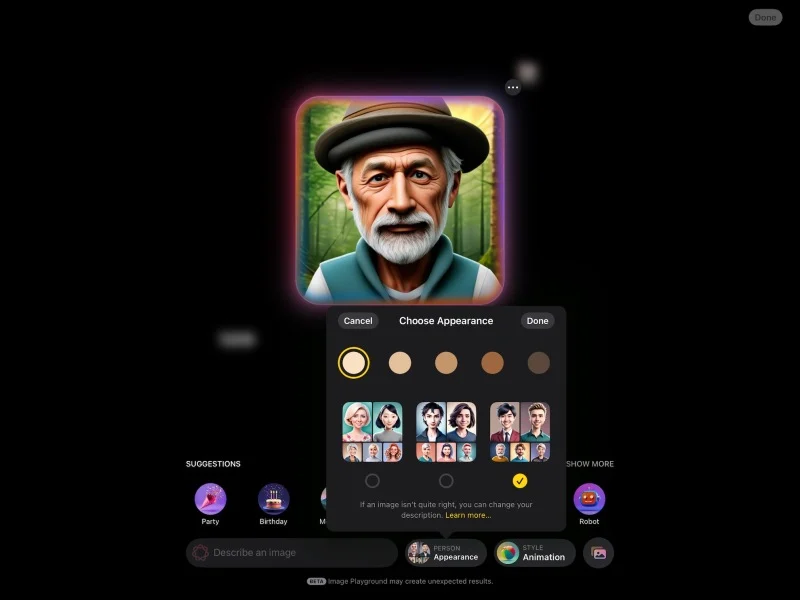
Since its debut in October 2024, Apple Intelligence has grown more capable, though a few promised features are still on the horizon. One standout addition is the Writing Tools suite, which is integrated across numerous apps. It allows users to refine the tone of their messages, generate quick summaries of lengthy content, and craft Smart Replies with minimal effort.
The Photos app also benefits from AI enhancements, offering improved natural language search, the ability to automatically assemble memory collections, and tools for removing unwanted elements from images. Siri has received minor upgrades, but the comprehensive overhaul Apple hinted at has yet to materialize.
When tested on the M3 iPad Air, Apple Intelligence performs fluidly and reliably—comparable to the iPhone 16e and other supported devices. While the M4 iPad Pro handles these tasks a bit faster thanks to its more powerful hardware, the performance gap isn’t wide enough to be noticeable in everyday use.
Accessories: A New Keyboard and the More Powerful Pencil
Apple has overhauled the Magic Keyboard for the iPad Air, bringing it more in line with the version designed for the iPad Pro. While it remains relatively bulky and weighty, the new model introduces several meaningful improvements. It includes a larger, more responsive trackpad, a full row of function keys for added convenience, and a backlit keyboard—making it easier to type in low-light settings. Altogether, these enhancements make it a far superior accessory compared to the previous generation. The updated Magic Keyboard is priced at $269.
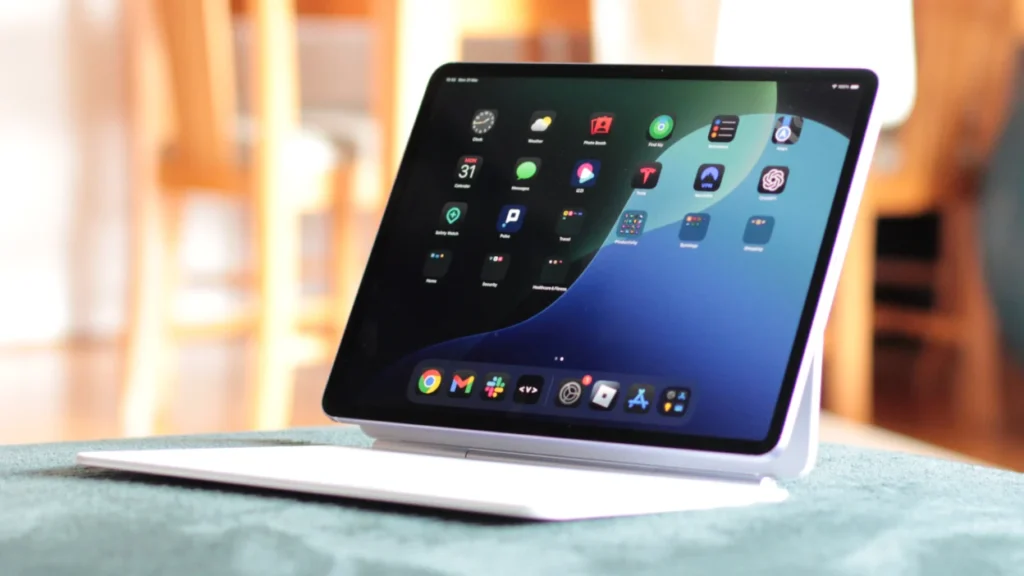
The M3 iPad Air is compatible with both the $129 Apple Pencil Pro and the $79 Apple Pencil USB-C, offering advanced features such as squeeze gestures for selection, barrel roll functionality to rotate the pen tip, tactile haptic feedback, hover detection, integration with Find My, and complimentary engraving options.
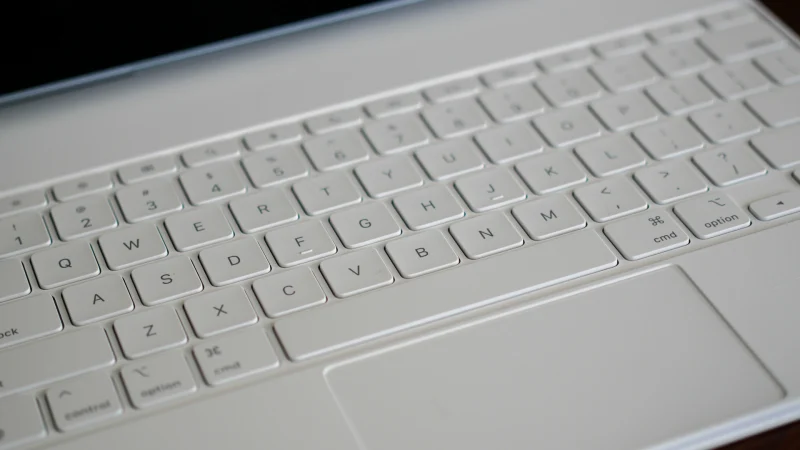
When combined, the 13-inch iPad Air and keyboard create a setup comparable in size and cost to a MacBook Air. In such a scenario, some users might lean toward the full macOS experience instead. However, if you appreciate the touch-focused design of iPadOS, this pairing offers a robust and versatile solution. The Apple Pencil continues to be the ideal stylus for the iPad, unlocking a wide range of possibilities for note-taking and creative work.

